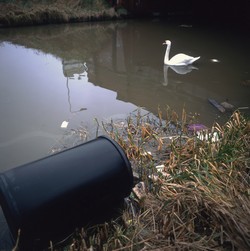Treatment for a dead-end metabolite pollutant
Xenobiotic compounds such as pesticides are not a natural component of biological systems but they can be found in waterways as a result of breakdown of other pollutants. However, such simple tertiary alcohols are rarely degraded by bacteria or other microorganisms. The BIOTEROL project focused on initiation of a lab evolution of efficient degradation pathways for xenobiotic tertiary alcohols with six to 10 carbon atoms. The research team started with bacteria already known to be involved in tertiary alcohol breakdown including Aquincola tertiaricarbonis L108 (L108). Researchers induced mutagenesis in strain L108 to find genes involved in the tertiary tert-amyl alcohol (TAA) pathway. Comparison of proteome expression profiles with different carbon sources and gene cluster regulation resulted in the identification of five gene candidates with redundant function involved in tertiary alcohol degradation. Enzyme activity assays with a C5 aldehyde showed that one of the candidates, aldehyde dehydrogenase has not adapted solely to degrade TAA, so rate improvement of the pathway is possible. Testing on prenal dehydrogenase in the TAA degradation pathway with mutations near the active site are set to continue. The team then looked at higher compounds than C5 prenal, up to C8. Evolution lines of strain L108 with the C6 compound were analysed from a genetic, physiological and chemical perspective. An observed reduction in generation time could be due to gene regulation factors or increased performance of other genes. A bonus could be the bioproduction of C5 and C6 alcohols from sugars and carboxylic acids using the reverse reaction. The team found that prenal dehydrogenase displays specificity for medium-chain substrates. Research results so far will be used to assess the fate of C6 to C10 tertiary alcohols to provide parameters for modelling in situ bioremediation potential. Furthermore, the properties of the L108 cultures can be used for pollutant removal at contaminated sites.







